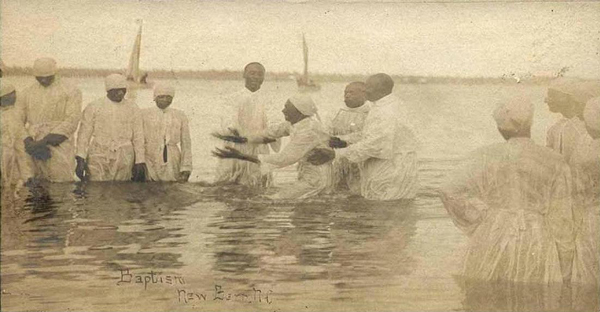What Is the Color Yellow Associated With
How 8 Colors Got Their Symbolic Meanings
Intro

Colors are imbued with great symbolic power. Even in the modern English-speaking world, where superstitious beliefs have largely faded in the light of scientific knowledge, many colors have retained their ancient associations. Most people know that brides should wear white, that "seeing red" means being angry, and that one can feel "green with envy." But learning why these connotations exist requires a look back to the beliefs and practices of the ancients.
Red passion

Red has a range of symbolic meanings, including life, health, vigor, war, courage, anger, love and religious fervor. The common thread is that all these require passion, and the "life force" that drives passion blood is red.
When people become angry their faces become flushed with color. When they're happy and healthy, they have rosy cheeks (whereas when they're sick or dying, they have a deathly pallor, lacking in red). When men fight, blood is spilled. In all cases, red blood manifests itself in connection to passion.
Colors were so powerful in traditional cultures that red objects were believed to convey health through their color alone. For example, most red stones such as garnets and rubies were believed to have health-giving and disease-preventing properties. In Rome, children wore red coral as a talisman to protect them from diseases, and in China, for similar reasons, children always wore a piece of red clothing.
White purity

In a wide range of cultures, the color white symbolizes purity and innocence, and white robes and garments are worn to convey spiritual and/or sexual purity. It isn't surprising that white became associated with purity, as even the smallest drop of dye, or a smudge of dirt, destroys the color.
Black mystery/death

Many ancient cultures believed that black was "the color of mystery and of the mysterious ways and wisdom of God," the historian Ellen Conroy wrote in her book "The Symbolism of Colors" (1921). This was because night, as well as darkness the absence of light transcended human perception in the same way that the wisdom of God was thought to be beyond comprehension.
Of all mysteries, death may have been the biggest. Ancient people were completely "in the dark" about what would happen to them after death, and so it was (and is) represented by the color black in many cultures. There was the added coincidence of death sharing similarities with sleep, which happens in the darkness of night and when closed eyelids block out all light. [Why Do We Die? ]
Purple royalty

Purple symbolizes royalty, nobility and imperialism. In many European societies, the symbolism was even established by law: From ancient Rome to Elizabethan England, "sumptuary laws" forbade anyone except close members of the royal family to wear the color.
Purple's elite status stems from the rarity and cost of the dye originally used to produce it. Fabric traders obtained "Tyrian purple," as the dye was called, from a small mollusk that was found only in a region of the Mediterranean Sea near Tyre, a Phoenician trading city located in modern-day Lebanon. More than 9,000 mollusks were needed to create just one gram of Tyrian purple, and because only wealthy rulers could afford to buy and wear fabrics dyed with the color, it became associated with the imperial classes of Rome, Egypt and Persia.
Another consequence of this is that purple also came to represent spirituality and holiness, because the ancient emperors, kings and queens that wore the color were often considered to be gods or descendants of the gods.
Blue truth/sadness

According to Conroy, the primary association of the color blue for most of recorded history was with truth a meaning that leaves a remnant in our language in the phrase "true blue." This was because blue is the color of a calm and clear sky, and it is calm reflection that leads to truth. [Why Is the Sky Blue? ]
Today, though, blue mainly conveys sadness and despair. When you've "got the blues," you're down in the dumps. The connotation may relate to tears and rain (with its depressive effects), as water was typically represented in people's minds as blue. In Greek mythology, Zeus made it rain when he was sad.
Green nature/wisdom

For obvious reasons, the color green represents nature and the environment; more abstractly, it symbolizes wisdom. The latter association has ancient roots.
According to Conroy, the Egyptians believed that a god named Thoth led the souls of the dead to "a green hill of everlasting life and eternal wisdom." Later, the Romans based their god Mercury on Thoth, and the planet Mercury was in turn based on the god. For this reason, in astrology,"green is sometimes said to be the color of the planet Mercury, which is the planet governing the mind and conferring knowledge knowledge not only of the kind essential to material success, but also inspirational knowledge and celestial wisdom," Conroy wrote.
Later, Christians often tied the archangel Michael to Roman mythology's Mercury. This is why traditional depictions of Michael show him conducting the souls of the departed to the "green hill of Zion."
Aside from its association with wisdom, there's a flipside to green. "Green in its degraded sense gives us 'the green-eyed monster jealousy,' which is the direct opposite of celestial wisdom, for jealousy is always due to the intrusion of the desires of the self, while celestial wisdom wishes to give rather than to receive," Conroy wrote. "The color green is often said to forebode death. This idea may be a survival of the ancient worship of Mercury, and even of St. Michael in Christian times, both of whom were messengers of death."
Yellow happiness/cowardliness

It isn't surprising that yellow symbolizes happiness, warmth and sunshine in most cultures; these are characteristics of the yellow sun and its effects.
In ancient cultures where a god or gods were associated with the sun, such as Egypt and China, yellow was the highest and noblest of colors and thus, the color of religious figures and royals (who were thought to be descendants of the gods).
Conroy explains that all colors have a flipside a degraded meaning that traditionally opposed the positive one. Along with warmth and happiness, then, yellow also represents cowardliness and deceit. "We recognize the deceitful Judas very often in ancient pictures from the fact that he is given dingy yellow robes," she wrote.
Orange warning

Historians note that orange was not regarded by ancient Western civilizations as a primary color. Depending on the hue, the color fell in either the red or the yellow category. For this reason, orange is not imbued with a strong symbolic meaning of its own.
In recent history, though, orange has come to denote a warning, and is used for high visibility clothing (such as spacesuits ) and safety equipment (such as traffic cones). This association is a practical one: Orange contrasts most strongly with the color blue and therefore is highly visible against a clear sky.
Follow Natalie Wolchover on Twitter @nattyover. Follow Life's Little Mysteries on Twitter @llmysteries, then join us on Facebook.

Natalie Wolchover was a staff writer for Live Science from 2010 to 2012. She hold a bachelor's degree in physics from Tufts University and has studied physics at the University of California, Berkeley. Follow Natalie on Google+.
What Is the Color Yellow Associated With
Source: https://www.livescience.com/33523-color-symbolism-meanings.html